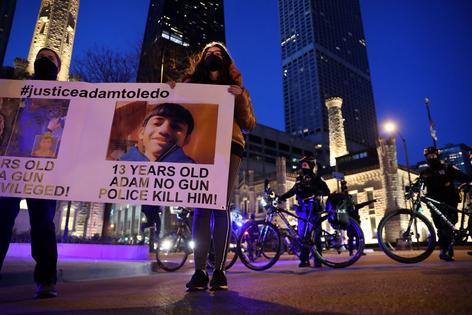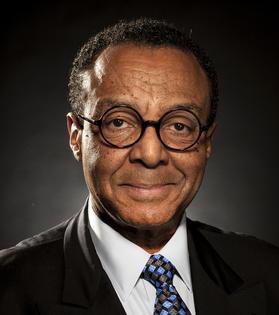In Less Than a Second, a 13-Year-Old’s Life is Ended and a Police Officer Must Live With It
Heartbreaking.
That description is undeniable in the otherwise controversial shooting death of 13-year-old Adam Toledo by Chicago police.
The most obvious headline for the story of the video’s release Thursday was simple: Police video shows 13-year-old was shot with his hands up.
Microseconds matter.
But frame grabs of his hands up show only a tiny slice of those fateful early morning hours on March 29. Watching the video posted by the city’s Civilian Office of Police Accountability, which investigates such cases, I found myself playing and replaying the microseconds, as measured by the video’s time code, shortly after 2:30 a.m. in which young Adam brought his empty hands into view in the dark alley at almost the same time that police Officer Eric Stillman fired his weapon.
And I could only say, “If only …”
If only young Adam had stopped running sooner as Stillman was chasing him, repeatedly shouting for him to stop and put his hands up.
If only young Adam — after he stopped, disappeared through an opening in a nearby fence and then reappeared — had held up his empty hands one second sooner, maybe Stillman would not have shot him.
Or, for that matter, if Stillman had waited only a second longer, maybe he would have seen clearly that he had no reason to shoot the teen.
I felt bad for both of them. In the video, Stillman can be seen desperately trying to save the boy’s life as other police and paramedics arrive, saying “Stay with me. Look at me. Come on, big guy, stay with me ...”
As a possible incident of police misconduct, this one lacks the clarity of others that had been making national headlines in the same week as the video’s release. Unlike Minnesota’s George Floyd case, there’s no video of a cold-eyed cop with his knee on the suspect’s neck. Unlike Chicago’s Laquan McDonald case, there’s no 16 shots pumped into a teenager who was not posing much of a threat. Unlike Minnesota’s Daunte Wright case, there’s no officer mistaking her Glock for a Taser.
But for COPA, I’m sure there will be a lot of attention given to those microseconds between Adam’s life and his death.
Attention also must be paid to evidence that the youth did indeed have a gun, according to Cook County prosecutors, which police found a few feet away from where he stood by the fence.
Also worthy of attention is Toledo’s friend Ruben Roman, 21, who sparked the fatal chain of events by firing a gun as he stood next to Toledo on a nearby street corner before they both ran off, prosecutors say. The gunshots were picked up by the city’s ShotSpotter gunfire detection system and police reportedly arrived on the scene in less than a minute.
But, for now, we have the sort of sad nightmare that Chicago police Superintendent David Brown described in an earlier news conference about the case as one of his “greatest fears … a deadly encounter between one of our officers and a juvenile.”
“Our officers must make split-second decisions when it comes to the use of deadly force,” he said, “and that is a heavy burden.”
True, especially when you’re talking not only about split seconds, but split microseconds.
What can be done? Those diabolical microseconds led Chicago Mayor Lori Lightfoot to speak at the same news conference of the city’s “urgent need” to develop a new policy for all foot pursuits like the one that led to Stillman and Toledo’s disastrous confrontation.
Almost every day, she said, “Police get a call, they see a potential suspect, their adrenaline is pumping, and oftentimes they get separated from their partner, so they’re running on their own through a dense, often dark, urban environment. And to add to that the person being pursued often has a firearm or is suspected to and so does the officer.”
Lightfoot didn’t go into specifics, but foot-pursuit policy also has been a concern for the International Association of Chiefs of Police, among other law enforcers, as “inherently dangerous.”
And as Jamie Kalven, of Chicago’s investigative Invisible Institute, which helped break the Laquan McDonald scandal, responded in The Intercept, “foot pursuits most often take place in Black and Latino neighborhoods” and “threat assessment is likely to be shaped by implicit bias.”
At moments like that, he concludes, a “split-second decision” to use deadly force may be less a decision than “sheer unthinking momentum.”
It’s hard to measure how much thinking can be overtaken by sheer momentum at such moments. But if any policy change can reduce such moments, we need to talk about it.
========
(E-mail Clarence Page at cpage@chicagotribune.com.)
©2021 Clarence Page. Distributed by Tribune Content Agency, LLC.
(c) 2021 CLARENCE PAGE DISTRIBUTED BY TRIBUNE MEDIA SERVICES, INC.










